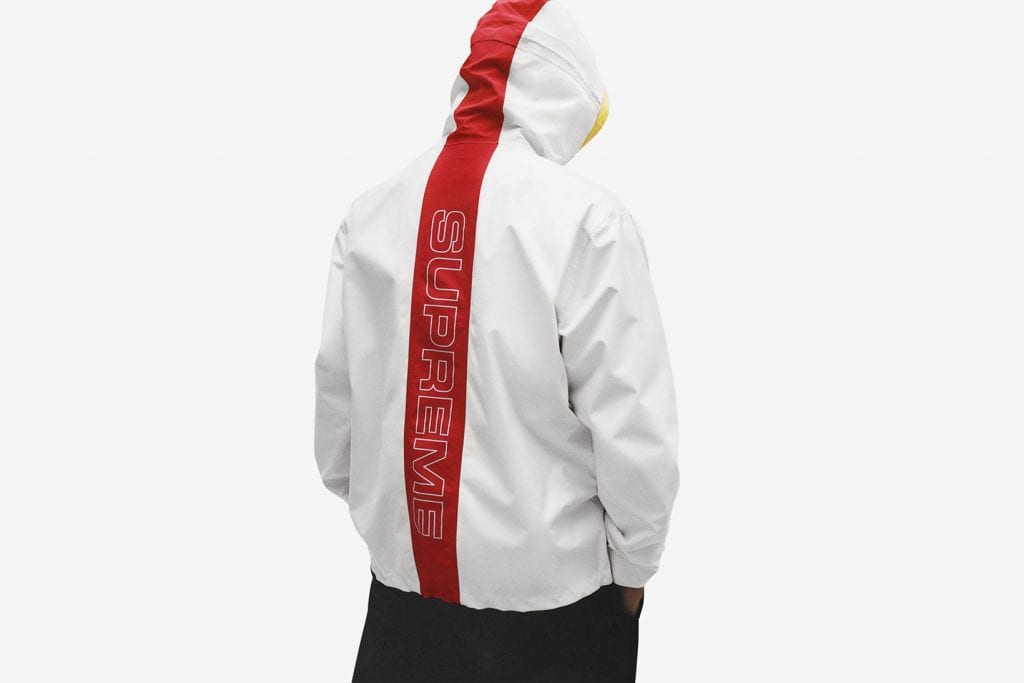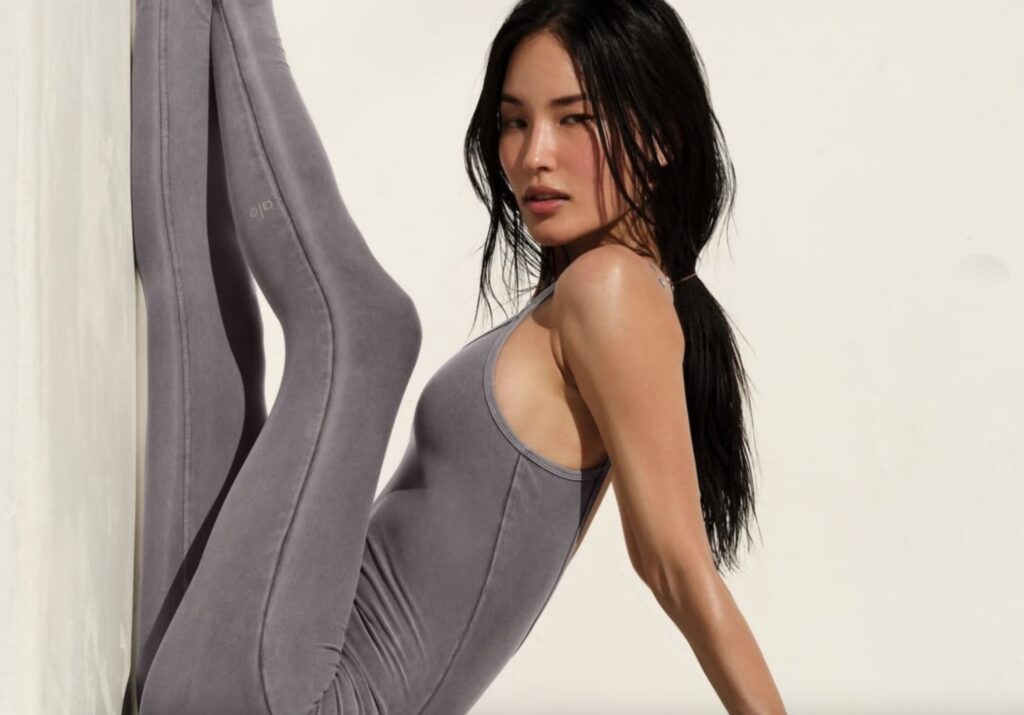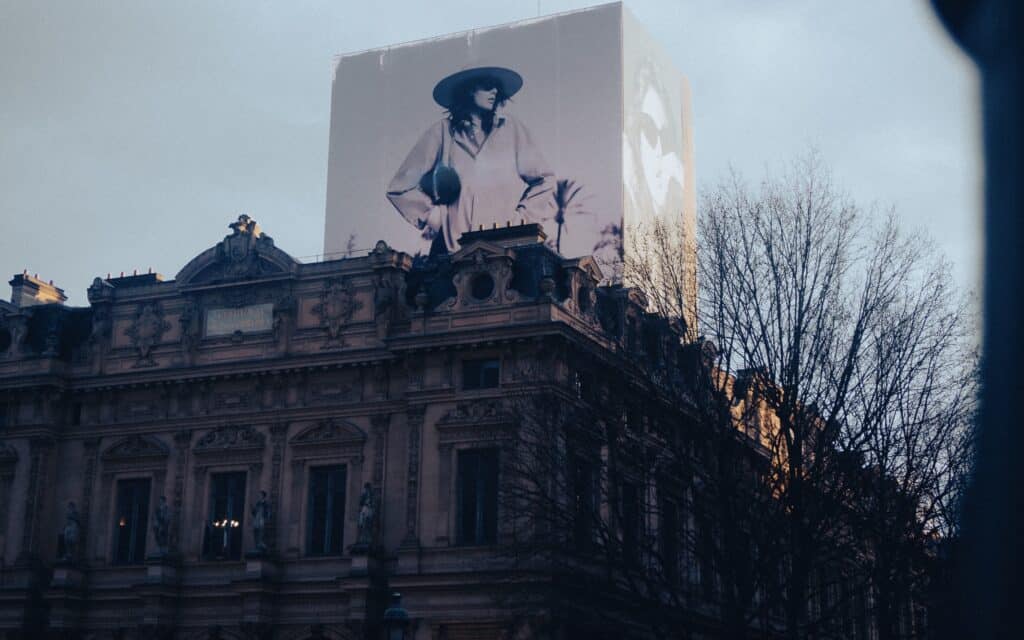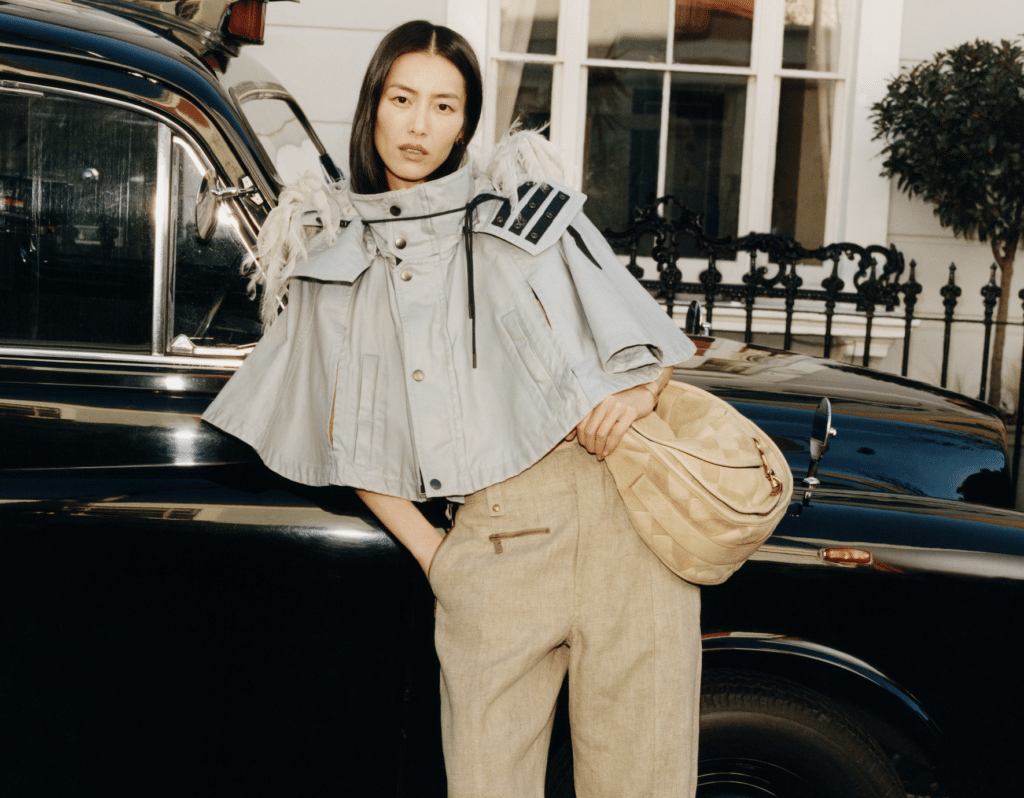Law enforcement officials descended upon factories in San Marino, the enclaved microstate situated on the Italian Peninsula between the Italian Apennine mountain range and the crystal waters of the Adriatic coast early this year. They had marching orders to do the same in certain cities in Italy, as well. Armed with orders from two courts, the police were authorized to take possession of all items bearing the name and famous red-and-white box logo of New York-based streetwear/skatewear brand Supreme.
The operation – which has been coined one of “the most important multi-jurisdiction civil enforcement operations in recent years” after it resulted in the confiscation of approximately 120,000 counterfeit items – had been a while in the making. The coordinated busts stem from an the bi-annual Pitti Uomo some two years before.
Nestled snugly between the seasonal London and Milan menswear fashion weeks, Pitti Uomo is the bi-annual men’s fashion mecca that draws some of the world’s best dressed menswear aficionados, hordes of buyers for international retailers, designers, and editors, who routinely gather in Florence for the week-long affair. And Pitti Uomo 89, which kicked off in mid-January 2016, was no exception.
It was there, amidst the street style photographer-drawing dandies and alongside the offerings of Brunello Cuccinelli, Lanvin, Levi’s, Norse Projects, and Zegna, among others, that Trade Direct Srl made its debut on the global menswear circuit.
Having already won over fans and stockists in and around its native Barletta, a small town located in south eastern Italy, Trade Direct was looking to expand its footprint, and its representatives arrived at the Pitti trade show to do just that. They were in search of new retailers to stock the brand’s garments and accessories, nearly all of which bore the word “Supreme” in bold lettering. Others were emblazoned with a red rectangle inside of which was the word “Supreme” in a Futura Heavy Oblique font.
As a result of a licensing deal with International Brand Firm (“IBF”), the barely 2-year old British holding company launched by Michele Di Pierro, which maintains rights in the “Supreme” trademark for use on garments and accessories in an array of countries, including Italy, Trade Direct does business as Supreme Italia.
But more than that, according to its advertising and lookbooks, as well as its now-defunct website, supremeitalia.com, Trade Direct is a “licensee of the most important brands in the world of streetwear,” including, it would appear, Supreme, the streetwear brand known for its limited edition products, its broad spectrum of collaborations, and its bona fide cult-level following that spans from New York City to Japan.
Meanwhile, in New York
Speaking of New York, across the Atlantic, Supreme founder James Jebbia was brushing off a scuffle with Smiths frontman Morrissey and preparing for the roll out of his brand’s Spring/Summer 2016 collection, the first since Max Vanderwoude Gross had taken over as design director.
For Spring, Supreme was offering up an array of light outerwear – a 3-button blazer in a creamy snake print, a tartan-lined leather jacket, a lime green windbreaker, a faux leopard fur coat, among other things. Nary was there not a garment devoid of some sort of branding: a Mondrian-inspired jacket bore a small “Supreme” insignia. The back of a quilted bomber was adorned with a royal coat of arms (complete with the word “Supreme”), and there were, of course, white tees in the mix, which all boasted a red rectangle along with the word “Supreme” in the Futura Heavy Oblique font.
To the untrained eye, the collection, set to drop in Supreme’s few domestic and international outposts – and its global e-commerce site – in just a month’s time, was undoubtedly associated with the one that was being shopped around at Pitti. Thanks to its lookalike wares, its careful marketing and its overt use of Supreme-specific branding, Trade Direct had “won over less-informed fans of the streetwear brand and convinced retailers and shops that they were purchasing originals,” according to Italian IP attorney Silvia Grazioli of Bugnion SpA.
In reality, despite the striking similarities, there is no absolutely affiliation between Jebbia’s 22-year old Supreme and Trade Direct’s unauthorized Supreme Italia endeavor.
As the menswear rumor-mill goes, Supreme and Trade Direct had managed to co-exist for a year or so, with some speculating that the real Supreme (i.e., Jebbia’s Supreme) did not see its much smaller rival as a sizable enough threat to devote resources to fighting its existence.
Nonetheless, when word got back to New York in 2016 that the very similarly-named Supreme Italia was aiming to mislead buyers in Florence as to the nature of its brand, Supreme’s legal team took action, and filed suit against Trade Direct in July.
Supreme v. Supreme Italia
In a complaint filed with the Business Specialized Division of the Court of Milan, Supreme – or better yet, its intellectual property holding company, Chapter 4 Corp. – alleged that Trade Direct was actively engaging in “counterfeiting activities and unfair competition” by distributing “garments bearing slavish reproductions of Supreme’s [trademark].”
But more than that, Chapter 4 Corp. claimed that Trade Direct was embroiled in fraud. To be exact, Chapter 4 Corp. asserted that IBF – which was not yet a party to the litigation – had filed a fraudulent trademark application for the Supreme box logo with the Italian Patent and Trademark Office in November 2015, barely a month after Supreme had filed its application with the same office.
January 2017 brought a win for Supreme when the court ordered Trade Direct to cease “any production, export and marketing of clothing and any other product bearing the mark ‘Supreme.’” The court also required Trade Direct to “withdraw from the market [any] products bearing the ‘Supreme’ trademark and related advertising or promotional materials,” and prohibited Trade Direct from “using the ‘supremeitalia.com’ domain name.”
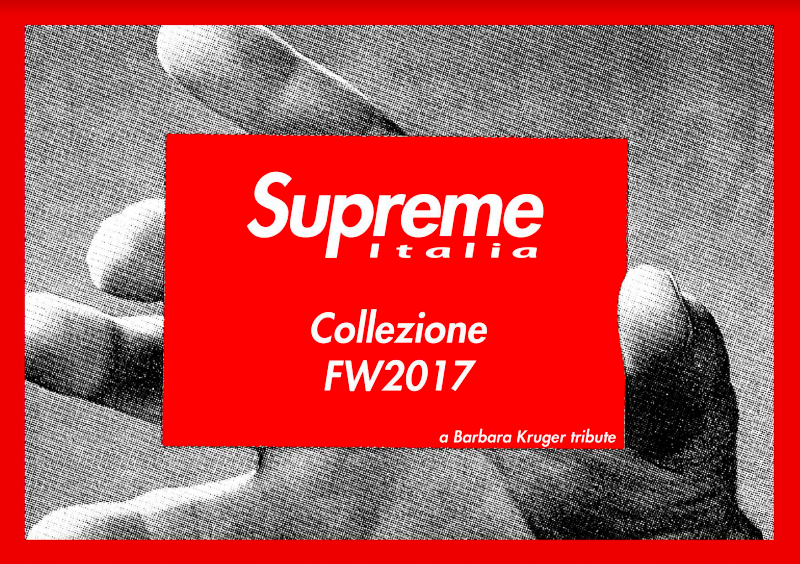 image: IBF
image: IBF
Not long after the court issued its preliminary ruling, the formerly functional supremeitalia.com was replaced with a notice from Italian law enforcement alerting visitors of the fact that the site was subject to seizure by the Guardia de Finanza, the Italian police force tasked with preventing, investigating and reporting financial crime, subject to criminal proceedings.
Unwilling to back down, Trade Direct filed to appeal the court’s decision, only to be handed another loss that spring.
In taking up the case in April 2017, the Business Specialized Division of the Court of Milan sided with Chapter 4 Corp. again. The court held that Trade Direct “had used an identical sign [to Chapter 4 Corp.’s earlier-filed and valid Supreme mark], for identical products,” as well as “the same advertising images and the same methods of promotion advertising” in an attempt to mislead consumers into believing it was affiliated with the New York-based Supreme. According to the court’s three-member panel, such “illicit conduct” gives rise to counterfeiting and “unlawful activity of parasitic unfair competition.”
More than that, the court determined that Trade Direct had gone so far as to “systematically exploit the work and creativity,” as well as “the advertising investments made by [Supreme].”
Chapter 4’s local counsel in Milan left the court that day with a significant win in hand.
Reflecting on the immediate consequences of the court’s decision, Martina Maffei, an intellectual property attorney in Simmons & Simmons’ Milan office, told Italian fashion site nss that Trade Direct was forced “to immediately stop the production of its fake products in any form and in any Italian point of sale.” In terms of the broader impact, Maffei said that Chapter 4 Corp. “can now institute proceedings” to permanently bar Trade Direct from selling products emblazoned with the Supreme trademark and to obtain compensation for damages.
And that is precisely what Chapter 4 Corp. did – and it did not waste any time. On the very same day as the court rejected Trade Direct’s appeal, Chapter 4’s lawyers initiated proceedings on the merits. This time, hey named both Trade Direct and IBF as defendants, and alleged that by using the Supreme name on garments and accessories, they were running afoul of trademark law and engaging in unfair competition.
In its response to Chapter 4’s suit, IBF would go on to tell the court that not only was it not in the wrong, it was Chapter 4 – and Chapter 4, alone – that was engaging in unfair competition.
A Quiet Trademark Scheme and a Global Legal Battle
That case is still underway in Milan, and it is not the only one of its kind. Going on in the background are similarly high stakes trademark battles that pit Chapter 4 against IBF and Trade Direct and that center on the right to use – and prevent others from using – the Supreme name on the global stage.
For example, civil proceedings are pending before the San Marino Civil Court. Following an initial win, in which the court ordered that IBF and Trade Direct’s infringing “Supreme” products be pulled from the market, Supreme is pursuing trademark infringement and counterfeiting claims against IBF and Trade Direct, among other sellers of Supreme Italia products.
In response, IBF has argued that the case should be dismissed altogether, since it maintains trademark registrations for “Supreme” in San Marino, while Chapter 4 does not. How is that possible given that James Jebbia’s Supreme has been in business for more than 20 years longer than IBF’s Supreme Italia?
As it turns out, IBF had, since its incorporation in late 2015, been quickly and quietly amassing rights in the Supreme name and logo in many countries where Jebbia’s Supreme had not previously sought trademark rights.
You see Supreme is, in 2018, a brand with an estimated $1 billion valuation (as tied to the reported $500 million investment from American multinational private equity giant, the Carlyle Group, in October 2017) bona fide global renown and demand. However, that has not always been the case. For much of Supreme’s 24-year history, it operated as a truly cult brand with a very limited retail presence (it currently maintains 11 stores) and truly de minimis traditonal marketing. As the Guardian noted this February, until recently, Supreme existed “under the radar of mainstream fashion.”
Still yet, Supreme – which only filed applications for its name and box logo in the U.S. in September 2011 – was, for most of its life, focused on building up its trademark rights in the U.S. and fighting the occasional legal battle right under its nose in New York. For instance, it sued Leah McSweeney – the founder of streetwear brand Married to the Mob – with a $10 million trademark infringement lawsuit, alleging that her lookalike “Supreme Bitch” logo was far too similar to its box logo. (The parties settled the matter out of court long before they were scheduled to appear in a New York court for trial).
Then something changed. Supreme began to look globally. As early as two years after it first filed to register its trademarks in the U.S., Supreme’s lawyers began filing trademark applications for registration across the globe. In 2013, they filed to register the box logo in Great Britain. The following year, applications were filed in Germany, Chile, and Brazil, among other countries. 2015 saw the filing of applications in France and the Benelux, followed by Mexico, Malaysia, Philippines, European Union, Argentina, etc. in 2017, and Mexico, Finland, Norway, Romania, Slovakia, Poland, Mexico, Costa Rica, and Peru, just to name a few, this year.
Not terribly long after Supreme began to look abroad, IBF started to file applications for the Supreme name and box logo. Thanks to a technicality in trademark law, IBF says that it has amassed rights in the Supreme trademark in 54 different countries, including San Marino and Italy. Unlike in the U.S., where trademark rights are enjoyed by the party that is the first to actually use the trademark, in San Marino (and an array of other countries), rights are gained by the party that is the first to file a trademark application and then in order to maintain that registration, actually use the trademark within 5 years.
The lack of a use requirement gives trademark-seeking entities that are not actually using the mark at issue in the jurisdiction at issue a significant advantage.
So, while IBF began using the Supreme trademark decades later than the original Supreme first put its box logo on its door on Lafayette Street in Manhattan and on the garments and accessories inside its store, it was able to obtain exclusive rights because it filed a trademark application in San Marino, one of the world’s smallest countries, before Chapter 4.
Those proceedings are still pending, as are criminal actions involving an array of additional retailers involved in the distribution of Trade Direct and IBF’s products.
Still yet, there are seizure proceedings – in which Chapter 4 is pushing to rid the market of what it deems to be clear cut counterfeits – making their way through various courts in Italy and beyond.
A Blow Before the EUIPO
In the midst of this complicated web of legal actions all stemming from the global appeal of Jebbia’s once under-the-radar skatewear brand and IBF’s clever trademark collecting scheme, Chapter 4 was dealt a preliminary blow before the European Union Intellectual Property Office (“EUIPO”) this spring.
Following the submission of comments from third parties (maybe IBF?), the EUIPO re-examined Chapter 4’s application for registration of the Supreme box logo, and on April 25, 2018, refused it. According to the EUIPO, Supreme is a “descriptive, laudatory [term] and lacking in distinctiveness,” and thus, ineligible for trademark protection.
That decision was not definitive, as in such proceedings, the trademark filing party – Chapter 4 in the case at hand – has the opportunity to appeal.
That fact, however, did not stop IBF’s communications department from circulating a creatively worded press release to the media praising the outcome. In its release, representatives for IBF celebrated the EUIPO’s decision as “an important and authoritative statement regarding the invalidity of the Supreme sign.” They also said the IP office’s findings “change the balance of power in the media and judicial campaign that Chapter 4 has launched since 2017 against its competitors.”
What IBF failed to note in its statement was that Chapter 4 could – and would – fight the EUIPO’s decision.
But even an appeal would not serve to prevent some of the damage that almost immediately followed from the EUIPO’s refusal. Looking to the EUIPO’s decision, a number of courts have moved to annul their orders that had required the seizure of Trade Direct and IBF Supreme-branded products.
For instance, this summer, the criminal Court of Trani, ordered that the websites www.supremeitalia.it, www.supremeitalia.com and brandshopstore.com – which had been subjected to a court-ordered block as a result of litigation initiated by Chapter 4 – be released back to IBF. The supremeitalia.it and brandshopstore.com sites are back up and running as a result, and offering a number of Supreme-branded apparel and accessories. Supremeitalia.com, it is still down, but the notice from Italian law enforcement regarding its seizure by the Guardia de Finanza subject to criminal proceedings has been removed.
Meanwhile, the same court ordered the release of more than 3,100 Supreme-branded garments that were destined for Spain but had been seized by police in the Italian city of Andria, just south-west of Trade Direct’s headquarters in Barletta.
Regardless of the EUIPO’s decision, which is subject to ongoing proceedings, legal sources close to Supreme maintain that IBF and Trade Direct are in the wrong, and that the media’s widespread use of the term “legal fakes” – which Silvia Grazioli of Bugnion SpA says is used to refer to “a legal copy of a brand, where ‘legal’ indicates that the fake brand is a trademark registered in a country where the original mark has yet to be launched” – is “misleading and technically wrong” since Trade Direct and IBF’s use of the Supreme trademark on garments “is simply illegal in Italy.”
The operators of IBF and Trade Direct vehemently disagree. “Supreme Italia does not sell ‘fakes,’” a representative for IBF told nss early this year. “We are carrying out a completely different project from Supreme New York.”
As for what the two companies have copied from the original Supreme, which predates their operations by more than 20 years, their answer is a simple, “Absolutely nothing.”
IBF’s operators are, in fact, so confident that they are not in the wrong that they recently announced that impending opening of some 70 physical stores across the globe over the next two years, including flagship locations in Beijing and Shanghai. That will mean that not only will they beat the real Supreme to China in terms of physical locations; they will outnumber Jebbia’s brand in terms of stores by almost 60.
“The IBF will open [a store] in every country on the globe where the intellectual property rights are present with the already owned stores in Spain as examples.” It noted that “already planned are stores in Belgrade where IBF is the ONLY HOLDER OF A REGISTERED SUPREME BRAND, as well as others territories, and therefore between the end of 2018 and 2019 no less than 70 openings around the world are expected.”
With neither IBF nor Supreme willing to back down, you can call this war.







